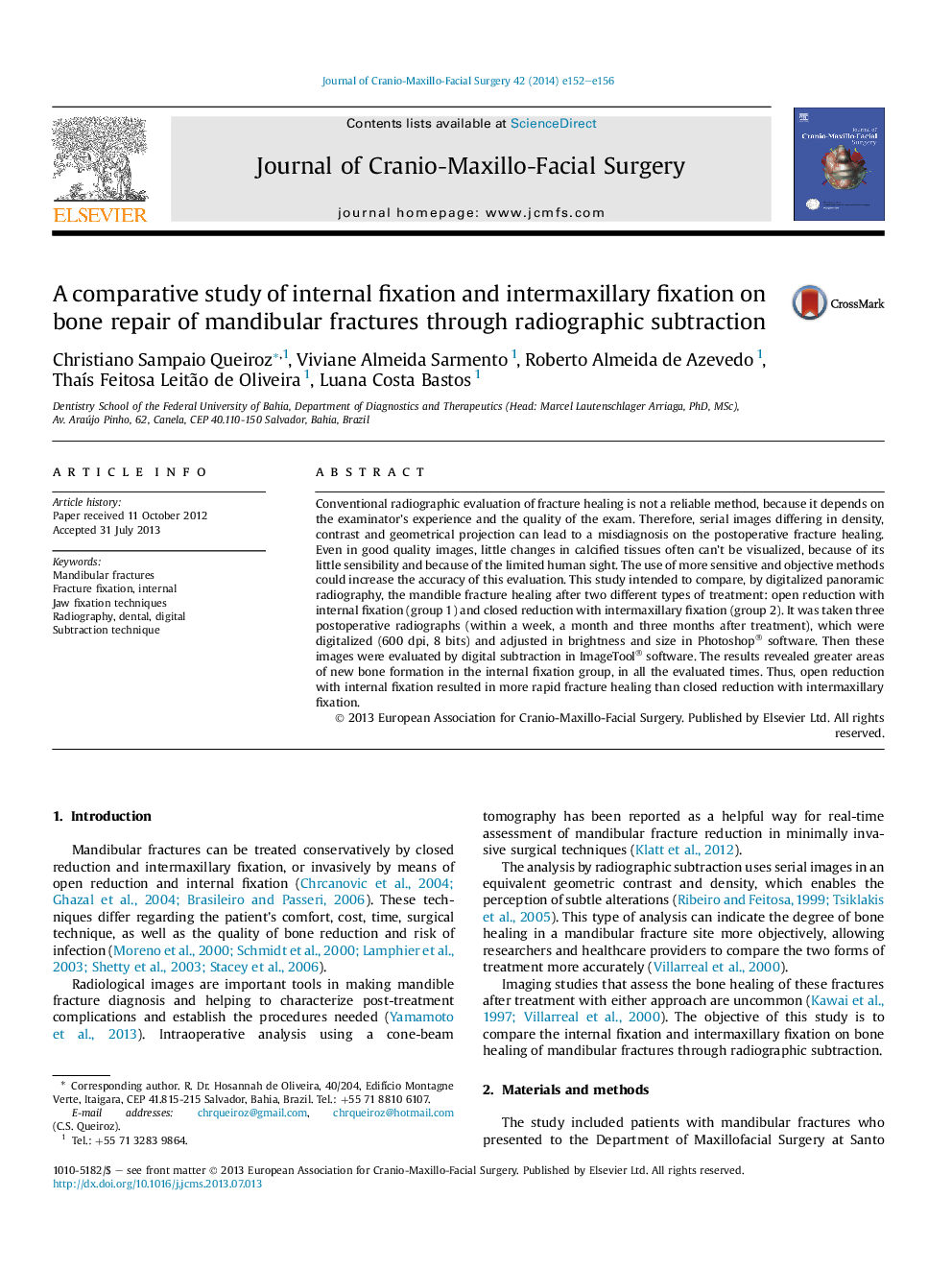| Article ID | Journal | Published Year | Pages | File Type |
|---|---|---|---|---|
| 3142620 | Journal of Cranio-Maxillofacial Surgery | 2014 | 5 Pages |
Conventional radiographic evaluation of fracture healing is not a reliable method, because it depends on the examinator's experience and the quality of the exam. Therefore, serial images differing in density, contrast and geometrical projection can lead to a misdiagnosis on the postoperative fracture healing. Even in good quality images, little changes in calcified tissues often can't be visualized, because of its little sensibility and because of the limited human sight. The use of more sensitive and objective methods could increase the accuracy of this evaluation. This study intended to compare, by digitalized panoramic radiography, the mandible fracture healing after two different types of treatment: open reduction with internal fixation (group 1) and closed reduction with intermaxillary fixation (group 2). It was taken three postoperative radiographs (within a week, a month and three months after treatment), which were digitalized (600 dpi, 8 bits) and adjusted in brightness and size in Photoshop® software. Then these images were evaluated by digital subtraction in ImageTool® software. The results revealed greater areas of new bone formation in the internal fixation group, in all the evaluated times. Thus, open reduction with internal fixation resulted in more rapid fracture healing than closed reduction with intermaxillary fixation.
